 Scientists in the United States have devised a method for measuring changes in the speed of seismic waves that could one day help predict earthquakes, a study said Wednesday.In experiments conducted at the San Andreas Fault Observatory at Depth (SAFOD) in Parkfield, California, Fenglin Niu and colleagues measured the speed of so-called shear waves-"S-waves"-before, during and after two small quakes that hit the region in late 2005.They detected an anomalous signal preceding each of the quakes.One occurred 10 hours before the temblors hit and the other two hours before, according to the study, published in the British journal Nature.Earthquakes release energy in the form of two types of seismic waves that radiate in all directions from the source.P-waves alternately compress and expand material in the same direction they are travelling.More destructive S-waves are slower, and shake the ground up and down or back and forth, perpendicular to the direction in which they are moving.Earlier laboratory experiments had shown that S-wave speed varies with different levels of stress due to the opening and closing of cracks.In theory, these differences could constitute a kind of "stress meter" that could provide clues of an imminent quake."Detecting stress changes before an earthquake has been the holy grail in earthquake seismology for years," said co-author Paul Silver of the Carnegie Institution for Science in Washington.But up to now scientists have been unable to measure these velocities with enough accuracy to have predictive power."It has been possible only recently, with improved technology, to obtain the necessary precision and reliability," Silver said.To conduct the experiments, the seismologists first "calibrated" their stress meter by measuring velocity changes coming from a known source-the pressure exerted by the atmosphere at a given point, also called barometric pressure.Previous research had shown that higher barometric pressure coincides with faster seismic wave speed.The largest variations in this correlation occurred hours before the biggest quake-3.0 in magnitude-during the two-month period of observation."We are very encouraged by these pre-seismic signals and are planning a series of experiments to expand on them, so that we may further understand their timing and physical basis," said Niu.
Scientists in the United States have devised a method for measuring changes in the speed of seismic waves that could one day help predict earthquakes, a study said Wednesday.In experiments conducted at the San Andreas Fault Observatory at Depth (SAFOD) in Parkfield, California, Fenglin Niu and colleagues measured the speed of so-called shear waves-"S-waves"-before, during and after two small quakes that hit the region in late 2005.They detected an anomalous signal preceding each of the quakes.One occurred 10 hours before the temblors hit and the other two hours before, according to the study, published in the British journal Nature.Earthquakes release energy in the form of two types of seismic waves that radiate in all directions from the source.P-waves alternately compress and expand material in the same direction they are travelling.More destructive S-waves are slower, and shake the ground up and down or back and forth, perpendicular to the direction in which they are moving.Earlier laboratory experiments had shown that S-wave speed varies with different levels of stress due to the opening and closing of cracks.In theory, these differences could constitute a kind of "stress meter" that could provide clues of an imminent quake."Detecting stress changes before an earthquake has been the holy grail in earthquake seismology for years," said co-author Paul Silver of the Carnegie Institution for Science in Washington.But up to now scientists have been unable to measure these velocities with enough accuracy to have predictive power."It has been possible only recently, with improved technology, to obtain the necessary precision and reliability," Silver said.To conduct the experiments, the seismologists first "calibrated" their stress meter by measuring velocity changes coming from a known source-the pressure exerted by the atmosphere at a given point, also called barometric pressure.Previous research had shown that higher barometric pressure coincides with faster seismic wave speed.The largest variations in this correlation occurred hours before the biggest quake-3.0 in magnitude-during the two-month period of observation."We are very encouraged by these pre-seismic signals and are planning a series of experiments to expand on them, so that we may further understand their timing and physical basis," said Niu.http://www.breitbart.com/article.php?id=080709171027.1awd9zoc&show_article=1
As in the days of Noah...

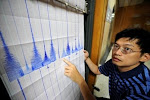
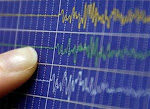
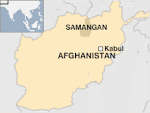







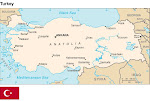
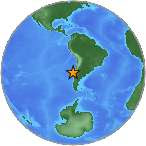




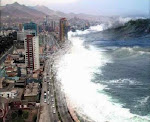

.jpg)


.bmp)
No comments:
Post a Comment